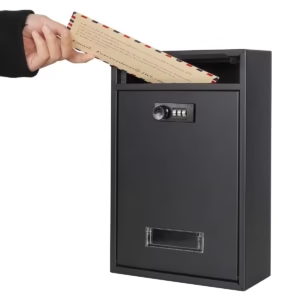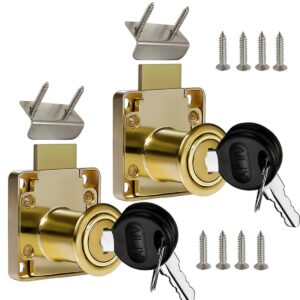When you’re immersed in your favorite game, time can feel like it bends. One minute you’re starting a quest, the next thing you know, it’s past midnight. That’s where a game play timer steps in — like a friendly reminder that time is ticking.
Whether you’re a casual gamer who just wants to track sessions or a competitive player aiming for strategic timing, understanding game play timers can change the way you play. Think of it as the difference between wandering aimlessly and having a trusty map in hand.
In this guide, we’ll break down everything you need to know — from what timers do, to how to use them effectively, to tips for getting the most out of your gaming time. Let’s dive in.
What Is a Game Play Timer?
A game play timer is a tool or feature that measures the amount of time you spend in a game. It can be built into the game itself, part of a gaming console’s system, or even an external app.
Some timers are purely informational — showing you total hours played. Others are functional — counting down and sending alerts to pace your play.
Why Do Game Play Timers Matter?
You might wonder, “Why bother? I’m just here to have fun.” But timers aren’t just for tracking; they have real benefits:
-
Time Management: Helps you avoid losing track of hours.
-
Strategic Play: Useful in competitive games where timing affects tactics.
-
Health & Balance: Encourages breaks to prevent fatigue or eye strain.
-
Goal Setting: Allows you to plan sessions and stick to them.
In short, they help you enjoy your games without them taking over your day.
Types of Game Play Timers
Not all timers work the same way. Here are the most common types:
1. Real-Time Session Timers
These run while you play and display the elapsed time. Perfect for short sessions where you want to keep track without guessing.
2. Countdown Timers
Set a limit (say, 2 hours) and get notified when time’s up. It’s like setting a kitchen timer, but for gaming.
3. Cumulative Timers
These track total time spent over multiple sessions. Great for seeing your overall play history.
4. In-Game Event Timers
Some games have timers for specific events — like when a boss fight starts, or a puzzle challenge begins.
How Game Play Timers Work
A game play timer starts ticking as soon as you enter a game session and stops when you exit.
In some cases, timers also pause when you’re in menus or cutscenes to give a more accurate reading. Others keep running regardless, offering a raw total of your session.
Modern consoles like PlayStation, Xbox, and Nintendo Switch often have built-in logs to track your time automatically. On PC, platforms like Steam display hours played right on your library page.
Benefits Beyond Tracking Time
While the obvious role is telling time, timers can do much more:
-
Boost Productivity: If you schedule gaming around work or study, timers help keep things balanced.
-
Improve Performance: Competitive players can use timers to measure speed runs or track how long certain strategies take.
-
Encourage Mindful Play: You become more aware of your habits, which helps prevent burnout.
When and Where to Use a Game Play Timer
You can use timers in almost any gaming context, but they shine in specific scenarios:
-
Speedrunning: Every second counts, so precise timing is key.
-
Daily Quests: Helps you finish tasks quickly before moving to the next.
-
Parental Controls: Parents can set limits for kids’ screen time.
-
Fitness Gaming: Games like Ring Fit Adventure use timers to manage workouts.
How to Set Up a Game Play Timer
The setup depends on your platform:
On Consoles
-
Go to your system’s settings.
-
Find parental controls or playtime settings.
-
Enable play session tracking or limits.
On PC
-
Use built-in platform tools like Steam’s time tracker.
-
Try third-party apps for more customization.
In-Game
Many modern titles have their own timers — often found in the settings or HUD (heads-up display).
Tips for Making the Most of Game Play Timers
-
Set Realistic Limits: Don’t go from 6 hours to 1 hour overnight; adjust gradually.
-
Pair With Break Reminders: Use timers alongside stretch or hydration alerts.
-
Track Progress: Check your weekly or monthly totals to spot patterns.
-
Use for Skill Building: Time yourself on specific challenges to measure improvement.
Common Mistakes to Avoid
-
Ignoring Alerts: Setting a timer and then skipping every reminder defeats the purpose.
-
Over-Reliance: Timers help, but they can’t replace self-discipline.
-
Poor Calibration: Make sure your timer’s clock matches your system’s time to avoid skewed results.
The Future of Game Play Timers
With gaming becoming more integrated into daily life, expect timers to get smarter. Future features may include:
-
AI-Based Play Recommendations: Suggesting breaks based on your fatigue patterns.
-
Health Data Integration: Linking with fitness trackers to monitor posture, heart rate, and stress.
-
Cloud Sync: Seamless time tracking across devices.
The goal is to make timers not just a tracking tool, but a personal gaming assistant.
Conclusion
A game play timer isn’t about limiting fun — it’s about enhancing it. By keeping an eye on the clock, you can enjoy immersive sessions and maintain balance in your life. It’s like having a coach who says, “Take a breather,” just when you need it.
Whether you’re chasing a speedrun record, managing your kid’s screen time, or simply trying to avoid that “it’s 3 AM already?!” moment, a game play timer can be your best gaming companion.





